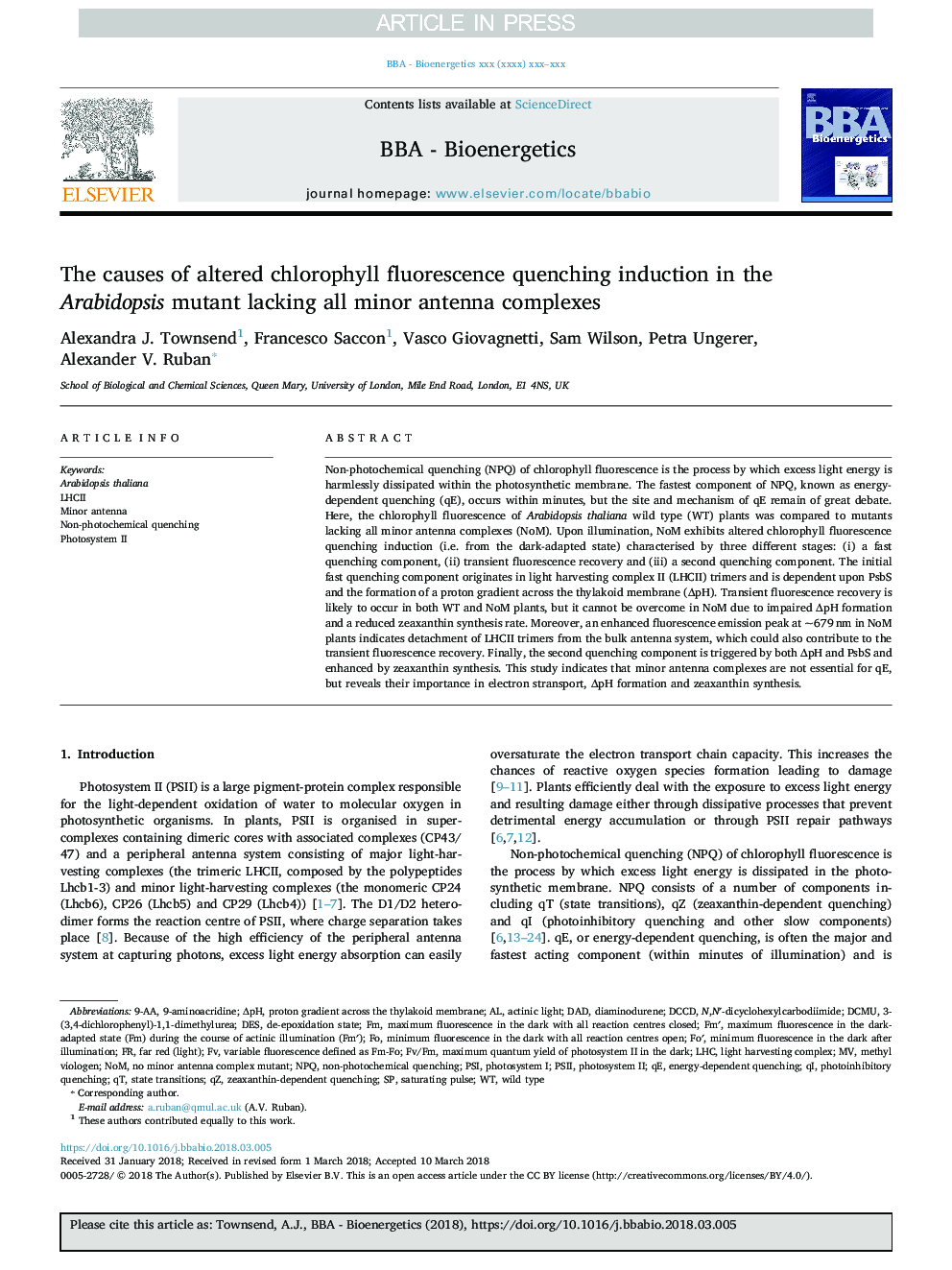| Article ID | Journal | Published Year | Pages | File Type |
|---|---|---|---|---|
| 8298519 | Biochimica et Biophysica Acta (BBA) - Bioenergetics | 2018 | 10 Pages |
Abstract
Non-photochemical quenching (NPQ) of chlorophyll fluorescence is the process by which excess light energy is harmlessly dissipated within the photosynthetic membrane. The fastest component of NPQ, known as energy-dependent quenching (qE), occurs within minutes, but the site and mechanism of qE remain of great debate. Here, the chlorophyll fluorescence of Arabidopsis thaliana wild type (WT) plants was compared to mutants lacking all minor antenna complexes (NoM). Upon illumination, NoM exhibits altered chlorophyll fluorescence quenching induction (i.e. from the dark-adapted state) characterised by three different stages: (i) a fast quenching component, (ii) transient fluorescence recovery and (iii) a second quenching component. The initial fast quenching component originates in light harvesting complex II (LHCII) trimers and is dependent upon PsbS and the formation of a proton gradient across the thylakoid membrane (ÎpH). Transient fluorescence recovery is likely to occur in both WT and NoM plants, but it cannot be overcome in NoM due to impaired ÎpH formation and a reduced zeaxanthin synthesis rate. Moreover, an enhanced fluorescence emission peak at ~679â¯nm in NoM plants indicates detachment of LHCII trimers from the bulk antenna system, which could also contribute to the transient fluorescence recovery. Finally, the second quenching component is triggered by both ÎpH and PsbS and enhanced by zeaxanthin synthesis. This study indicates that minor antenna complexes are not essential for qE, but reveals their importance in electron stransport, ÎpH formation and zeaxanthin synthesis.
Keywords
9-AAphotoinhibitory quenchingde-epoxidation stateΔpHDCMULHCIINPQDCCDDADPSIIPSI3-(3,4-Dichlorophenyl)-1,1-dimethylurea9-AminoacridineFm′Fv/FmN,N′-dicyclohexylcarbodiimideArabidopsis thalianaDESState transitionsLHCNon-photochemical quenchingdiaminodureneEnergy-dependent quenchingphotosystem IPhotosystem IIFo′Methyl viologenLight harvesting complexNOMactinic lightwild type
Related Topics
Life Sciences
Agricultural and Biological Sciences
Plant Science
Authors
Alexandra J. Townsend, Francesco Saccon, Vasco Giovagnetti, Sam Wilson, Petra Ungerer, Alexander V. Ruban,
